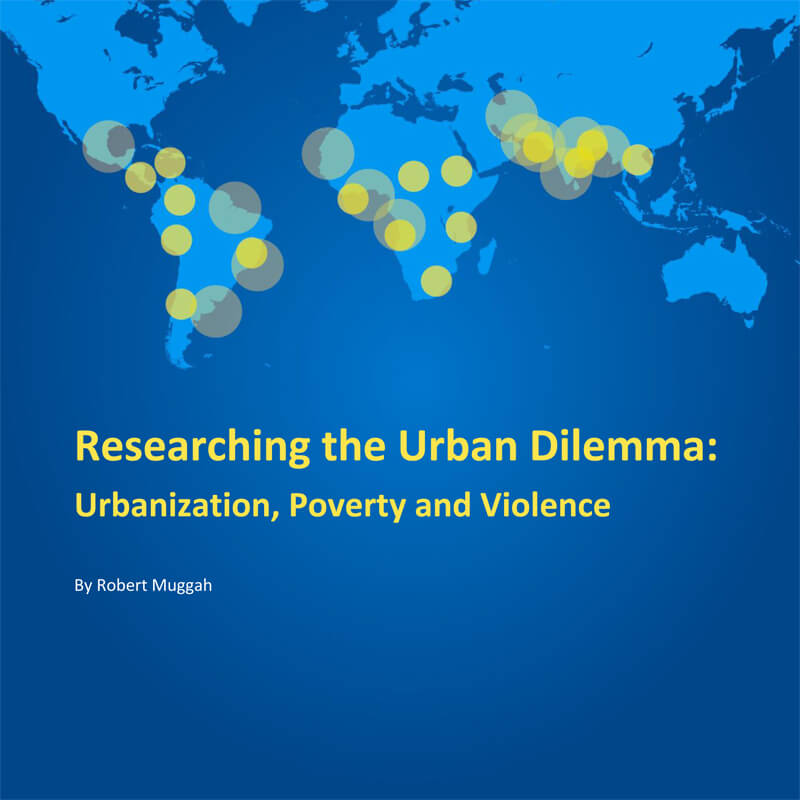Prefacio del documento publicado por Canada’s International Development Research Centre (IDRC):
In 2007, the world became a predominantly urban society. Across the world, an estimated three quarters of economic production takes place in cities. Urbanization brings with it possibilities of improved access to jobs, goods and services for poor people in developing countries and beyond as globalization trends connect cities world-wide.
However, urbanization has also brought new challenges in terms of conflict, violence and urban governance – and citizen security in particular. The World Bank’s landmark 2011 World Development Report highlighted the significance of violence as a development problem. Its work noted how violence is changing, becoming less structured around notions of civil war and conflict, and more focused around criminal violence, terrorism and civil unrest. The impacts of violence on human development are significant and varied. As Stergios Skaperdas has documented, they include direct costs such as death and injury, destruction to public infrastructure, personal property and assets, as well as indirect costs like psychological trauma, population displacement, the disruption of social services, reduced economic growth, brain drain and increased spending on law enforcement.
What is clear is that violence has emerged as one of the central development challenges of our time. Virtually all fragile states have experienced repeated episodes of violence, and the large majority of the world’s poorest people live in states affected by violence – over 1.5 billion people. As the 2011 World Development Report has underscored, the close relationship between violence and poverty is reflected in this stark fact: no low-income fragile or conflict-affected state has yet to achieve a single Millennium Development Goal.
Today’s cities are centres of multi-layered violence. Criminal and organized violence, associated with the drug trade in some countries have become entwined with national politics. Gangs and militias have come to substitute for public authority, offering some protection to communities, but often at great cost. Social violence, including violence within the household, is also a significant problem, particularly for vulnerable youth and women living in these environments.
In response to these challenges, Canada’s International Development Research Centre (IDRC) and the United Kingdom’s Department for International Development (DFID) have launched Safe and Inclusive Cities. This collaborative research initiative is aimed at generating an evidence base on the connections between urban violence, inequalities and poverty and on identifying the most effective strategies for addressing these challenges. The present study marks the first step in this endeavour, and has served to inform the design and scope of the Safe and Inclusive Cities research initiative.
Descargar el documento completo (PDF).
